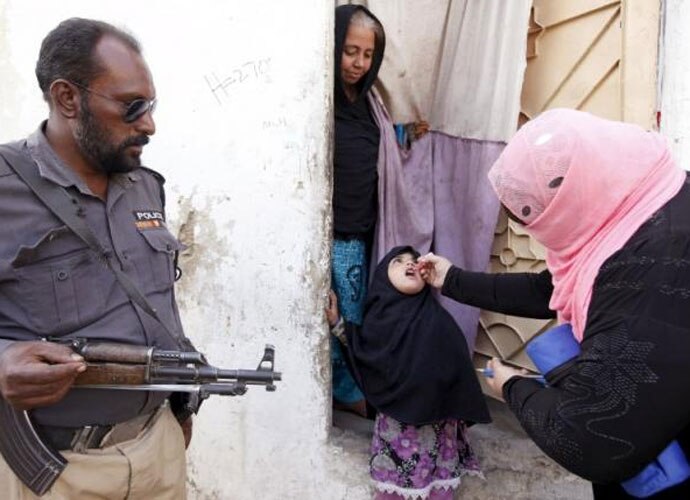India may be polio free, but it can't afford to be complacent

The detection of a polio virus in Hyderabad has sent alarm bells ringing in public health circles, and rightly so. It is bad news for a country which was certified polio-free by the World Health Organisation (WHO) in March 2014.
The comforting news, however, is that no child has been infected, and no outbreak of polio has been reported. The discovery of the polio virus in the environment also shows that post-eradication surveillance is working fine.
The strain of the polio virus that has been detected in a sewage in Hyderabad is "vaccine derived polio virus" or VDPV. This means it is not a wild polio virus.
The last case of wild polio was reported in India in January 2011. It has been more than five years since a wild polio virus was detected. Detection of a vaccine-derived strain of polio virus, therefore, is not going to alter India’s status as a polio-free country.
As the name implies, VDPV comes from the polio vaccine itself. The Oral Polio Vaccine (OPV) attenuated or weakened virus (which can not cause polio) evokes immune response (production of antibodies) in the body. It is normally excreted and dies out. However, sometimes, it can mutate and survive in the environment for long, and in rare conditions, can cause outbreaks also.
 |
| India has to be particularly vigilant because the virus is circulating in its neighbourhood – Pakistan and Afghanistan. |
VDPV is capable of causing full-fledged poliomyelitis. Outbreaks of the disease can occur in areas where all children have not been fully immunised. It can result in a vaccine-associated paralytic polio (VAPP), though its chances are rare – about 1 in 2.7 million doses of OPV.
The ministry of health has revealed that a total of 14 sewage samples collected from different parts in the country tested positive for VDPVs between January 2015 and May 2016. In none of these places, there was any transmission of the virus.
Sewage samples are collected from over 30 sites spread all over the country for poliovirus detection at regular intervals. All cases of sudden paralysis (known as Acute Flaccid Paralysis or AFP) among children below 15 are also investigated and followed up.
Though VDPV has been found in Hyderabad environment, health agencies have said that it has not been transmitted to children. Still, as per international protocols, special immunisation drives will be conducted as a precautionary measure. Such immunisation drives will be launched in Hyderabad and Rangareddy districts on June 20.
In order to eliminate chances of any vaccine-derived polio cases, it has been suggested to use Inactivated Polio Vaccine (IPV) which is given through injection and not oral drops. For the Hyderabad immunisation drive, IPV will be used.
Now it is futile to debate if India should have opted for IPV right at the beginning, instead of oral polio drops which carried the risk of vaccine-derived disease, however small it may be.
As long as wild polio virus is circulating anywhere in the world, we can’t afford to lower our guard. India has to be particularly vigilant because the virus is circulating in its neighbourhood – Pakistan and Afghanistan - though the number of cases in these two countries have fallen to just a handful in recent months.
Polio vaccination drives in conflict-ridden zones on the Afghanistan border have always posed a problem.
Eradication of polio is a success story in global health in recent years. It is equally daunting to keep countries polio-free forever.

